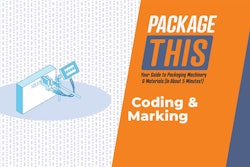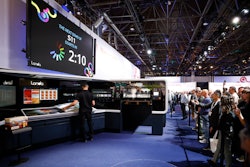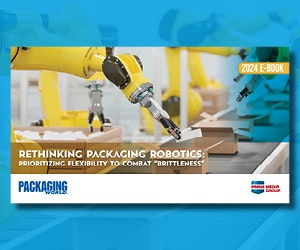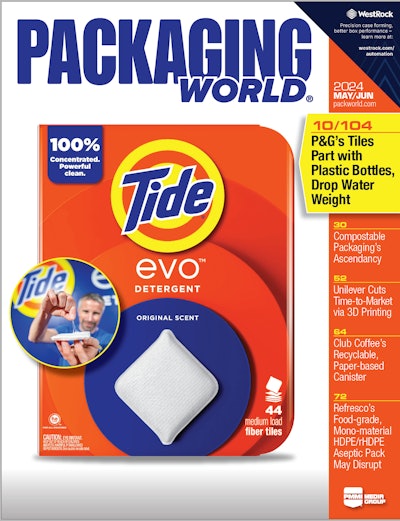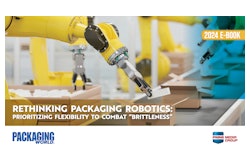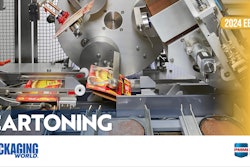
The Paulig Group is a family-owned food and beverage company on a mission to grow a sustainable food culture. Founded in 1876 in Finland as a wholesale business for imported groceries, the company now has 2,300 employees in 13 countries and its products are sold in 70 countries through retailers and caterers. It produces a variety of products, from coffees and beverages to popcorn and lentil chips, but is a European market leader in Tex Mex products including tortilla chips, taco shells and wraps, salsas, dips, and seasonings.
Paulig Belgium in Roeselare, along with seven other Paulig production sites, has been a carbon-neutral production facility since 2022. The company has switched to more energy-efficient processes, as well as district heating and renewable sources of electricity and gas. The company says that these initiatives have cut emissions by 98% since 2014. To further ensure sustainability, nothing goes to waste at the Belgium-based factory: Any misshaped tortilla wraps are ground up and used again, while anything that falls on the ground is sold as animal feed.
Paulig produces twelve different kinds of tortilla wraps, such as wheat, whole grain, corn, beetroot, and chia seeds, among other varieties. Production runs around the clock, and a rate of 25 tortilla wraps/min, amounts to 1.6 billion per year, enough to wrap around the earth’s circumference almost eight times. Paulig Belgium produces twelve kinds of tortilla wraps, including beetroot and corn.Paulig Belgium
Paulig Belgium produces twelve kinds of tortilla wraps, including beetroot and corn.Paulig Belgium
Packaging operations rely on centralized vacuum
The company relies on modified atmosphere packaging (MAP) to safeguard product freshness. A thermoforming machine is connected to a central vacuum system. Two rolls of packaging films are fed to the machine. The bottom film is heated to a specific temperature, allowing it to be molded into the desired shape. The heated plastic is then moved to a forming station, where vacuum pressure pulls the sheet over a custom-made mold. A specialized cooling mechanism ensures that the tray is cooled, allowing the mold to be removed.
The tortilla wraps are then placed in each tray. Vacuum removes 99% of the air in the packaging, and another machine replaces it with CO2N2. The protective gas blend ensures that the tortilla wraps are well-preserved and do not oxidize and become stale. Acting as a gas-tight seal, the second packaging film roll is applied and closes the tray.
“Thanks to the vacuum supplied by Busch, we can significantly increase the shelf life of our product and ensure that it stays as fresh as the day it was packaged,” says Rik Vandenbroucke, technical engineering manager, Paulig Belgium.
The central vacuum system is not only responsible for tortilla packaging, but also for their transportation inside the production facility. Pick-and-place robotics use vacuum suction on end effectors to gently lift each pack of tortilla wraps into a corrugated case. When each case is full, it is stacked on a pallet for shipment.
During construction of a new production facility that houses these tortilla operations, Paulig Belgium consulted with vacuum experts from Busch, who advised them to opt for a centralized instead of a decentralized vacuum system. If Paulig Belgium had not chosen a central vacuum system, each packaging line would have been equipped with three vacuum pumps. “By centralizing our vacuum supply with Busch we significantly reduced the number of vacuum pumps required by our process, and vacuum is always readily available! With a central vacuum system we save 15,000 Euro on annual energy costs,” Vandenbroucke says. The new system even enabled the company to replace the venturi ejectors that previously supplied all pick-and-place processes by converting compressed air into vacuum. The central vacuum system at Paulig Belgium.Busch Vacuum Solutions
The central vacuum system at Paulig Belgium.Busch Vacuum Solutions
Preparing for the future
At Paulig, it is essential to prevent downtime. “Our production runs 24/7 in five shifts and is only shut down for two weeks out of the year. The central vacuum system from Busch not only ensures smooth day-to-day production, but it also makes maintenance a breeze,” says Vandenbroucke. “We do not need to stop production in order to carry out maintenance on our vacuum pumps, and since they are not installed inside the packaging machines, they are much easier to reach and service.”
Paulig Belgium saves an additional 5,000 Euro on maintenance costs per year. Thanks to the system being installed in a separate room, heat and noise on the production floor have also been reduced.
Currently, the central vacuum system is designed for ten packaging lines. It consists of nine R5 rotary vane vacuum pumps, three PANDA vacuum boosters, three MINK dry claw vacuum pumps, and a vacuum vessel.
To further reduce energy costs, each MINK vacuum pump is equipped with a variable speed drive (VSD) from Busch. It adapts the pumping speed according to the fluctuations in demand through the production process by regulating the rotational speed of the vacuum pump’s motor. The company plans to add another seven packaging lines to their production facility, amounting to 17 packaging lines in total. Powered by vacuum, Paulig Belgium will be able to produce even more tortilla wraps per year and continue to bring flavor to the lives of many.





